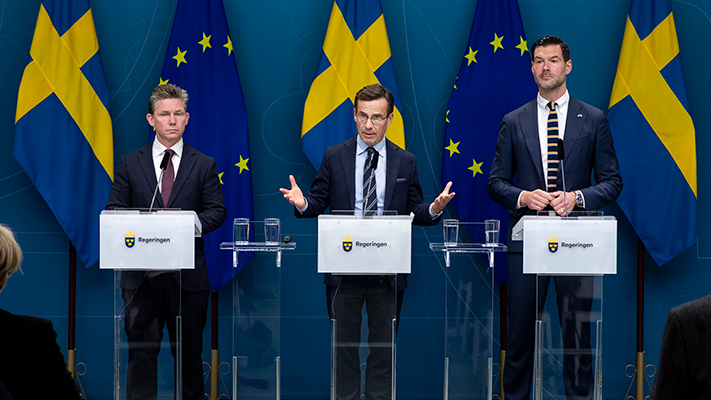VALERIE INSINNA

HALIFAX — Drones, space-based surveillance capabilities and munitions could get increased attention from Sweden as the Nordic nation attempts to boost spending for modernization in the coming years, according to its new defense minister.
Since coming into power this fall, Sweden’s new government has laid out three defense priorities. The first is joining NATO, and the second is increasing military support for Ukraine “including the transfer of more advanced military weapons systems,” Pål Jonson, who became Sweden’s top defense official in October, told Breaking Defense.
The third priority involves increasing Sweden’s defense budget over time. In November, Sweden’s armed forces put forward a proposal to increase military spending to 2 percent of its gross domestic product — the longheld goal for NATO members — by 2026 instead of its previous declaration to do so by 2028.
“I think what became crystal clear on the 24th of February this year was that Russia is willing to take bigger political and military risks … and the threshold for the use of military force is very low,” Jonson said in an interview on the sidelines of Halifax International security Forum. “And that’s a reality that we have to take into consideration.”
Sweden must speed up its military modernization plans in order to ensure it is able to fend off Russian aggression, and Swedish defense officials are closely watching the ongoing conflict in Ukraine to help inform what technologies the nation will need to contend against Moscow, Jonson said.
“One thing that’s clear, of course, is that drones play a critical role in contemporary warfare, and we’ve seen that of course, in Armenia [and] Azerbaijan. We’ve seen in in Syria. We’ve seen it in Yemen. We’ve seen it in Afghanistan. But it’s even more clear here [in Ukraine],” Jonson said.
The war also has made clear how important access to information is, and one area that Sweden is particularly interested in is the intelligence that can be gleaned from space-based capabilities such as reconnaissance satellites, he said. Finally, Sweden may have to increase its investments in long- and medium-range precision weapons, like cruise missiles and rockets.
Jonson’s comments on modernization echo those made by Gen. Micael Byden, Supreme Commander of the Swedish Armed Forces, who laid out the military’s modernization and procurement strategy in November.
Like Jonson, Byden underscored the need to supply its ground force with more long-range fires and drones and said that “the national ability to launch satellites will be developed” in coming years. Byden also called for increased investment in maritime capability, specifically in surface ships and their associated combat systems.
Sweden’s new center-right government hopes to increase spending for defense and national security by 13 billion SEK, or about $1.2 billion, in 2023. However, Jonson noted that the new government’s defense budget proposal could face a multitude of hurdles, including political opposition as well as economic factors such as inflation.
“[The Swedish military’s] buying power of course is affected by the dollar right now, which is very strong compared to the Swedish krona. Prices for diesel and gasoline are going up, and also inflation has an impact. So this is going to be a challenge,” he said. “That was also another incentive for us to make sure that we provide the right amount of money in order to assure that we have solid economic financing for matching our increased military investments.”
No comments:
Post a Comment